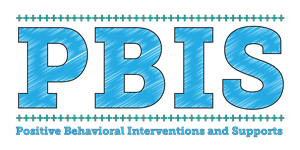Introduction to Elementary PBIS: Creating Positive School Environments
A brief introduction into what PBIS is and the benefits of applying it in an elementary setting.
What is PBIS?
PBIS stands for Positive Behavioral Intervention Support and is considered a framework for supporting the whole school in social, emotional and behavioral expectations. Since about 1997 when it was introduced it has been implemented into thousands of schools across the country. There are many benefits of implementing PBIS in your school including improved student behavior and creating a positive school culture. In every school I have taught at, PBIS was the foundation for the school's expectations. I have also been the leader of PBIS at my current school for the past three years. I truly believe PBIS is important in every school because it builds a school community, is data driven and allows for consistency for all students.
School Community
One of the biggest benefits of PBIS is how it creates a positive school community. The best community builder would be our monthly assemblies. Every month we switch off between an in-person assembly and a virtual assembly. This allows not to take away too much teaching time but still have the ability to celebrate our school. No matter what the format is, our assemblies celebrate student achievements, remind students of school expectations, and introduce students to the character trait of the month. Our student council leaders help to run the assembly and give feedback on what should be included in the presentation. This is a great way to allow for student voices to be heard and to give older students ownership of the assemblies. Students also get so excited to attend the assemblies and to hear their classmates' achievements.
Data Driven
PBIS practices are driven by the behavior data of your school. It is very important to use your data to help inform problem behavior areas. For example maybe you notice that many students are struggling on specific playground equipment. That would be a great place to start reteaching the expectations. Another example might be that you notice students are struggling at a certain time of day. That would be an indicator to include a mindfulness activity or a brain break at that specific time. In my school we look at the data monthly as a grade level team and then have deeper discussions at our staff meetings. We use that time to share ideas with teachers on how to help with certain behaviors. It also helps to inform us what our focus should be each month as an incentive.
Consistency for All Students
The consistency for students is another benefit of using PBIS in your elementary school. Expectations are set at the beginning of the year and all teachers should be using the common language. This helps to build a solid foundation for students and allows for simple reteaching. It can also help with classroom management skills. Looking at student behavior through a positive lens can help you create a calm classroom environment. The goal of PBIS is to have 80% of your school successful in following the expectations. With a solid foundation and consistency for all students this can easily be accomplished.

